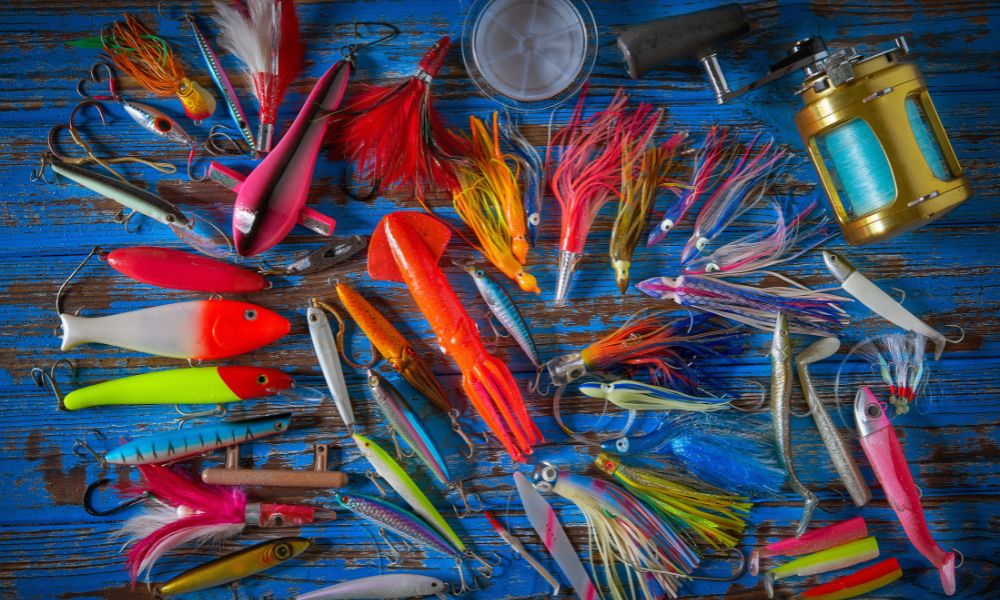Fishing has been a popular pastime and livelihood for centuries, and one of the most exciting aspects of fishing is choosing the right equipment. Lures, in particular, play a pivotal role in attracting fish and increasing your chances of a successful catch. In this guide, we’ll explore the different types of lures, their features, and how to use them effectively to improve your fishing experience.
What Are Lures?
Lures are artificial baits designed to attract fish by mimicking the appearance, movement, or sound of a prey species. Unlike traditional bait, which uses natural substances like worms or minnows, lures are made from a variety of materials such as metal, plastic, rubber, and wood. They come in different shapes, sizes, and colors to imitate the prey of specific fish species.
Lures are not only designed to attract fish but also to provoke a predatory response. The movement of the lure in the water, often combined with its color and design, triggers a fish’s instinct to strike.
The Different Types of Lures
Lures come in various forms, each tailored for specific fishing conditions, techniques, and target species. Here’s a breakdown of the most common types of lures you’ll encounter:
1. Crankbaits
Crankbaits are among the most versatile lures and can be used to target a wide range of fish species. These lures are typically made of plastic or wood and are designed to dive at different depths in the water. They have a flat, wide lip at the front, which helps them dive deeper when retrieved.
Crankbaits are perfect for attracting fish in deeper waters, and they are often used for bass, walleye, and pike. They come in various shapes, sizes, and colors, allowing anglers to tailor their approach based on the conditions.
2. Jigs
Jigs are heavy lures that consist of a weighted head with a hook attached to the body. They are designed to be bounced or “jigged” along the bottom of the water or retrieved in a vertical motion to mimic the movement of a distressed or injured baitfish.
Jigs are incredibly effective for species like bass, crappie, and walleye. They can be customized with soft plastic bodies or live bait to increase their attractiveness.
3. Spinnerbaits
Spinnerbaits consist of a lead head with one or more spinning blades attached to it. These blades create vibrations and flashes of light in the water, which attract fish. The spinning motion simulates the movement of small fish, making spinnerbaits ideal for species like bass, pike, and muskellunge.
Spinnerbaits are especially effective in murky water, where the added vibration and flash help fish locate the lure.
4. Spoons
Spoons are metal lures with a concave shape that allows them to wobble and reflect light as they move through the water. This wobbling motion imitates a small fish swimming, making spoons highly effective for predatory species like trout, pike, and salmon.
Spoons can be used in various fishing environments, including saltwater and freshwater, and are known for their versatility and durability.
5. Soft Plastics
Soft plastic lures are flexible, often lifelike imitations of worms, minnows, or other aquatic creatures. These lures can be rigged in a variety of ways, depending on the species you’re targeting and the fishing conditions.
Soft plastics are extremely effective for bass fishing, especially when used with techniques like Texas rigging or Carolina rigging. They are also available in a wide range of colors, sizes, and shapes to match the specific prey fish in the area.
6. Topwater Lures
Topwater lures are designed to float on the surface of the water, creating disturbance and noise as they are retrieved. These lures can mimic an injured fish struggling on the surface, attracting fish like bass, pike, and musky.
Topwater lures come in a variety of forms, including poppers, walking baits, and prop baits. They are particularly effective during dawn or dusk when fish are actively feeding near the surface.
7. Swimbaits
Swimbaits are designed to mimic the swimming motion of larger prey fish, such as shad or trout. These lures can be either hard or soft, with many featuring lifelike body shapes and colors. Swimbaits are ideal for catching larger fish species like trophy bass, pike, and striped bass.
Swimbaits are often used in deeper waters, where they can be retrieved slowly to create a lifelike swimming motion.
How to Choose the Right Lure
Choosing the right lure is essential to your success as an angler. Here are several factors to consider when selecting a lure for your next fishing trip:
1. Target Species
The species you’re targeting will significantly influence your lure selection. Different fish species are attracted to different types of prey. Research the diet of your target species and choose a lure that resembles their natural prey.
2. Water Conditions
Water clarity, temperature, and depth all play a role in determining which lures are most effective. In clear water, subtle and realistic lures like soft plastics or jigs work well, while in murky water, brighter colors and vibrating lures like spinnerbaits are often more effective.
3. Time of Day
Fish behavior can vary depending on the time of day. During low-light conditions such as dawn or dusk, topwater lures or noisy, flashy lures may work better. In bright sunlight, fish may be deeper and more cautious, making deeper diving lures or those with a more natural presentation more successful.
4. Season
The season plays a critical role in fish activity. During the spawning season, fish may be more aggressive, and bright or larger lures may attract attention. In colder water, slower-moving lures like jigs or soft plastics may be more effective, as fish are less likely to chase fast-moving baits.
How to Use Lures Effectively
Once you’ve chosen the right lure, using it effectively is key to maximizing your chances of a catch. Here are a few tips on how to use lures:
1. Vary Your Retrieval Speed
Fish can be picky about the speed of the lure. Try varying your retrieval speed by reeling in faster or slower to see what works. Often, a slow, steady retrieve works well, but sometimes a quick retrieve or a stop-and-go motion will trigger a strike.
2. Use the Right Gear
Make sure your fishing rod and reel are suited for the lure you’re using. For example, light tackle is ideal for soft plastics, while a medium-heavy rod is better suited for heavier lures like crankbaits or swimbaits.
3. Pay Attention to Depth
If you’re fishing in deep water, choose a lure designed to dive to the appropriate depth. Lures with a lip, such as crankbaits, can dive deeper, while jigs and soft plastics are better for bottom fishing.
4. Experiment with Color
Fish are attracted to specific colors depending on water clarity and light conditions. Bright colors work well in murky water, while natural colors like silver or brown are better for clear water.
Conclusion
Lures are an essential tool for any angler looking to increase their chances of a successful fishing trip. With the right selection and technique, you can mimic the movements of real prey and attract fish to your line. By understanding the different types of lures available, how to choose the right one, and how to use them effectively, you’ll be well-equipped to enjoy a productive fishing experience, whether you’re a beginner or an experienced angler.















